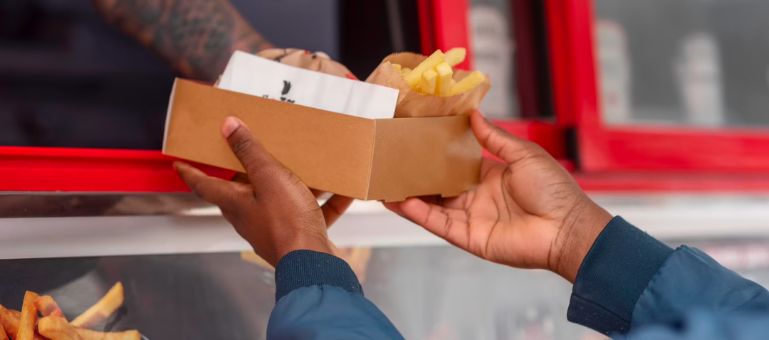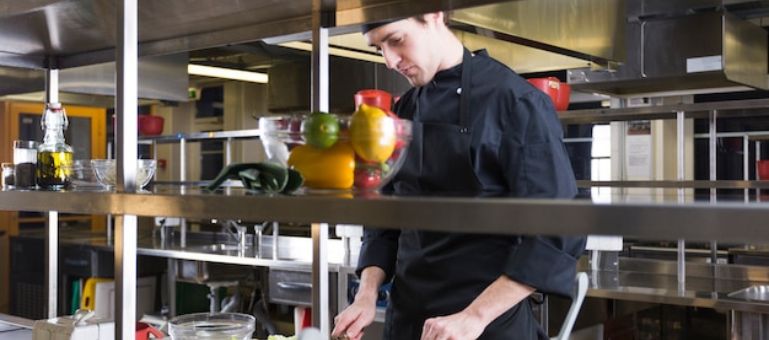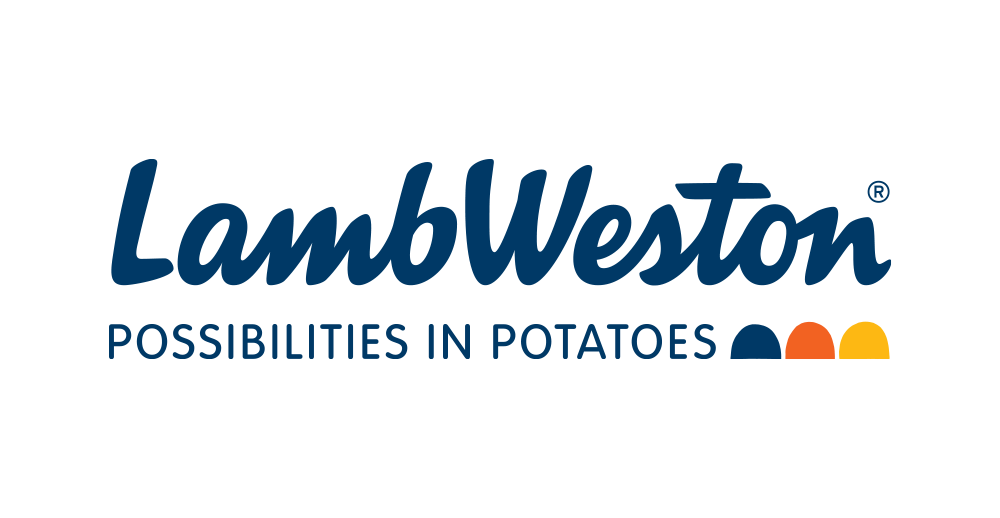If you belong to the food industry and you are looking for food service operations for your food business, you have landed on the right page!
Creating a flavourful dish is only one aspect of setting up a food business. The next integral component of establishing your business in the industry is managing food service operations.
The food and hospitality industry uses food service operations as an umbrella term to describe culinary services that help you run a business. This involves preparing, presenting, hiring, managing inventory, and serving food to customers.
The components of food service operations are typically the same, but the magnitude can vary depending on the type of business, whether a restaurant, cafe, or catering business.
Why are we emphasizing knowing the food service operations thoroughly?
Your business’s food service operations determine the kind of dining experience your customers will have. If your chefs can put up crafts and the staff can serve them on time, you will be on your way to building a family of loyal customers.
The management of these operations requires careful planning, resource allocation, and timely service. The ultimate success of food service operations rests upon guest satisfaction.
This article will explore the different types of food service operations and their pivotal role in the hospitality sector.
Learn the core aspects of restaurant management to stand out in the food industry!
Defining Food Service Operations
The Essence of Culinary Services
The hospitality industry thrives on exceptional food service operations. This requires the culinary service and restaurant management to work together to provide an unparalleled dining experience.
Food service operations run on a spectrum of processes involved in preparing, serving, and managing food and beverages. To keep yourself ahead in the food industry, you should be ready to cater to the customers’ diverse palates and expectations.
From the time a customer walks into your restaurant or visits your cafe or food truck, your service operations should leave them satisfied with their order within the promised time frame.
Every food business has to balance the three core rules: restaurant management, catering services, and dining experiences. Let’s look into the details of each to help you grasp the essence of food service operations.
Food service operations within restaurants require careful planning and execution. This takes care of everything, from menu creation and inventory management to staff coordination and ambiance design.
Business owners need to track performance metrics and finances to ensure the food business achieves goals.
Restaurant management is based entirely on the coordination of all managerial aspects so that customers receive meals that speak of an entire journey of flavors and hospitality.
The true essence of food service operations culminates in culinary services. This determines the level of guest satisfaction.
F&b services are all about striking a balance in flavors and making the dish look presentable. Chefs must deliver the same level of perfection with every dish and cater to the guests’ preferences.
You should provide a dining experience with a pleasant ambiance, exemplary service, and flavors that appeal to the customer’s aesthetics. The outlet must complement the type of food served. Make sure your customers are not just having dinner, but making memories at the diner.
7 Types of Food Service Operations
Food service operations are categorized into commercial and non-commercial. Each type of food service, be it a fast-food establishment, a catering company, or institutional dining, has its own logistics and operations that are followed.
We have discussed some of the most common dining options and the required food service operations so you can give your customers the best experience.
1. Full-service dining

It is also known as table dining. As explained by its name, this type of food service requires customers to be seated at a table and served by waitstaff.
Once the customers are seated, a menu is given to them. Customers can choose from the menu or request a chef special.
The staff notes the orders and brings food to the table. The key factors that affect satisfaction levels include wait time in long queues or for the order.
Table service can range from casual to fine dining experiences, each with varying levels of formality and personalized attention.
2. Counter Service
In counter service, customers place their orders at a counter or a designated area and then collect their food when it is ready.
This type of service is often seen in fast-food restaurants, cafes, and delis. This has become popular because it is a quick and convenient way for customers to order and receive their meals.
3. Buffet Service

Buffet service involves a self-service setup where a variety of dishes are laid out on a buffet table. Customers can help themselves to the dishes of their choice.
A buffet service is common in settings like cruises, hotels, events, and large gatherings. Hosts can opt to serve multiple cuisines to cater to various preferences.
From the service’s point of view, this requires the dishes to be refilled on time so customers are not left waiting. Staff is mainly responsible for serving drinks and clearing out the tables.
4. Catering Service

Catering services provide food and beverage offerings according to personalized requests. This is common for events such as weddings, corporate functions, and parties.
Caterers create custom menus for the guests, prepare the food off-site, and then deliver or serve it at the event location. This type of service requires careful planning and attention to detail to ensure the success of the event. The waitstaff is responsible for setting up the catering area and serving food.
5. Room Service
This is common in hotels in the hospitality industry. Room service allows guests to order meals and have them delivered to their rooms. A menu is kept in the hotel rooms, and guests can order by calling on the phone extensions.
This offers a convenient way and ensures privacy for guests who prefer to dine in the comfort of their accommodations. From a business’s point of view, all the work happens behind the scenes, and the staff is responsible for delivering the food to the room.
6. Food Trucks

Food trucks are mobile eateries that offer a wide range of cuisines and dishes. These are often the busiest because they are parked in various locations, such as street corners, festivals, and events.
Business owners have a variety of customers to serve as all expect a unique dining experience on the go.
Staff members must be efficient and work in a compact space. A food truck layout is planned to accommodate cooking stations, preparation areas, storage, and a point-of-sale system in a small area.
The food truck market has observed substantial growth over the last few years and there has been a rise in gourmet and specialty food trucks, catering to more niche culinary trends
7. Takeout and Delivery Service
The rise of online ordering and delivery platforms has made takeout and delivery services popular. Customers can place orders online or over the phone and have their meals delivered to their homes or picked up at the restaurant.
The staff has to manage customer orders so everyone receives the correct items within the delivery timeslot. Similarly, staff members responsible for delivering food should be well-versed in the locations to be able to deliver fresh.
The food service options described above can be applied to multiple settings. Let’s see how it does:
Restaurants vary widely in concept and cuisine. Fine-dining establishments prioritize exquisite presentation and personalized service. Casual restaurants offer a relaxed setting to enjoy the food.
Cafes offer a more laid-back atmosphere. Customers visit to have conversations over coffee and pastries. Cafes often provide a cozy ambiance that encourages customers to unwind.
Fast-food establishments provide quick and convenient options. They cater to busy individuals seeking on-the-go meals. Characterized by efficiency, these establishments prioritize speed without compromising taste, making them a staple for those seeking a quick bite.
Institutional dining is a type of food service commonly found in institutions such as schools, hospitals, and workplaces. For this, meals are prepared in bulk in commercial kitchens and served to a large number of people. The focus is often on providing balanced and nutritious meals to meet the dietary needs of the individuals being served.
Role in Culinary Experiences
Once you have defined and set up your business and the associated food service operations, you can start looking for ways to ensure efficient service.
Enhancing Guest Satisfaction
A delightful dining experience relies on well-managed food service operations. This is an amalgamation of quality food and drinks, efficient service, and a pleasing ambiance.
You cannot focus on one aspect only. Creating memorable culinary experiences to make guests happy requires determination in running the food business.
Guests pay attention to all aspects of the meal. This means they are looking for taste and visually appealing dishes. Your chef’s culinary experience should make guests feel satisfied when they enjoy tasty and well-prepared dishes.
To make your guests feel special, the staff should be paying attention to guests’ needs, requests, and preferences. Solving the customer’s issue or request distinguishes your food businesses. Service excellence is achieved when you value your guests’ time.
When servers are helpful, they create a positive impression, which contributes to guest satisfaction.
Lastly, let’s not forget that the ambiance of a restaurant or eatery sets the mood for the meal. A comfortable and inviting setting adds to the pleasure of the dining experience. Similarly, you need to invest in a well-designed interior with pleasant lighting. Choose appropriate music that complements the theme of the food and the ambiance.
This ensures you are investing in the right places and is essential in retaining customers.
Catering to Diverse Tastes
If you are looking to introduce new cuisines in the area, you should be well-versed in the culture and its associations. This helps you give your customers an immersive experience. Embracing culinary diversity requires food business owners to be accommodating.
Let’s explore the various aspects involved:
1. Menu Customizations: Food service establishments should recognize that no two palates are alike. This requires food business owners to plan menus. This can be addressed by offering menu customization options.
Customers can tailor their meals to dietary restrictions, allergies, or preferences. This accommodates individual tastes and enhances the dining experience by putting the customer in control.
2. Culinary Diversity: Each region has cultural influences that can be celebrated through the inclusion of various cuisines on menus. Be it Mediterranean delicacies or Asian-inspired dishes, food owners should try to offer a variety that caters to the multicultural customer base.
Food service operations have been revolutionary in bringing together the world’s cuisines to customers on plates. As a food business owner, you should take pride in your restaurant for serving an authentic taste of diverse cultures.
3. Special Diet Accommodation: The commitment to culinary inclusivity extends to customers with special diets. Your menu should offer vegan, vegetarian, gluten-free, and other dietary alternatives.
Chefs and business owners should work on a dedicated menu section and dishes that cater exclusively to these preferences. Show you care about your customers but include the contents of the dish on the menu. This helps customers with food allergies.
Operational Aspects
Menu Planning and Design

Menu planning and design serve as a foundation of successful food service operations, with the power to shape guest experiences and generate profits.
A thoughtfully crafted menu is more than just listing dishes. It helps individuals connect to their idealogy of food based on the tastes you offer.
A well-designed menu strikes a balance between culinary variety and customer preferences. Depending on the type of food service your restaurant offers, the menu should have a diverse selection of appetizers, main courses, desserts, and beverages.
This should be done in a way that you offer a variety of tastes but also something that resonates with the customers.
A strategically designed menu guides customers through their dining choices. It is a collection of signature dishes and chef specials, and it highlights seasonal ingredients and customer choices.
Introduce innovative offerings by inviting influencers and food bloggers to explore new flavors and talk about their experiences.
Make sure that the arrangement of dishes on the menu reflects the culinary experience of the chefs. From traditional comfort foods to exotic flavors, diverse options keep the customers engaged.
Food business owners are looking to generate revenues besides satisfying customer palates. The best way to do this is to price items thoughtfully on the menu, upsell through descriptions, and offer tempting combinations.
This simple way to generate increased sales benefits the food business’s bottom line.
Service Efficiency and Timeliness

How do you achieve customer satisfaction with timely service?
Service efficiency and timeliness are the unsaid rules behind seamless food service operations.
The first step towards a satisfying dining encounter is getting the initial step right, which means you should have easy and accurate order processing when customers place their orders. Whether in a bustling restaurant or a fast-paced eatery, timely order handling sets the mood for the guests’ dinner.
The next step is training your staff to provide attentive service. This creates a personalized touch that resonates with guests. Attentiveness to customer needs, queries, and preferences makes them feel valued.
If the serving and kitchen staff are not well-coordinated, it is difficult to serve your customers on time. Thus, synchronized coordination among staff members is pivotal.
A team with smooth communication and trust can prepare, present, and serve dishes promptly. This also comes in handy in case of a mistake, where the staff can immediately take ownership.
When orders arrive on time, interactions with staff are smooth. Customers can fully enjoy the flavors and company around them and will likely return regularly.
Future Prospects and Trends
Technological Integration
With technology all around us, it is no lie that the future of food service operations is also being transformed. The positives of shaping the future with digital convenience will pave the way for efficiency.
Traditional paper menus are being replaced by their digital counterparts. Interactive digital menus can be scanned by pointing a phone camera’s camera to a QR code.
This allows owners to show vivid visuals of the dishes on the menu with detailed descriptions. You can ass allergen information which helps customers make informed choices.
A survey reported that, on average, 67% of a restaurant’s revenue was derived from food orders placed either online or over the phone.
This shows how the convenience of online ordering has gained immense popularity over the years.
This is largely due to the fact that customers can spend more time browsing menus and making customizations from the comfort of their own devices. It helps them skip the mismanaged queues and order preparation time, streamlining the ordering process.
A customer visiting a restaurant is most concerned about the wait times to be seated inside. Reservation systems allow customers to book tables online to solve this crisis.
It shows the available time slots that customers can choose according to their preferences. This helps the restaurant staff to manage seats more efficiently.
Contactless payment options have also become a norm in everyday life. Investing in this technology minimizes physical contact and speeds up transactions.
This level of convenience resonates with the fast-paced lifestyles of customers and saves the hassle of carrying cash.
Other than benefitting customers, food tech has recently been integral to culinary innovation. From AI-driven recipe development to kitchen automation, technology has pushed culinary boundaries and helped chefs experiment with new flavours.
Sustainable Practices
The world is moving towards environmental preservation, and the food industry is looking for sustainable practices for food service operations. Establishments are embracing eco-friendly principles to meet customer preferences and create a lasting positive impact.
You may be wondering, how is your food business contributing to food-related waste?
You should understand that the key step towards sustainability starts with the selection of ingredients. You should look for sources supplying local and organic produce. This ensures you are supporting local communities and reducing carbon footprints.
Next, it is very common for food businesses to cook extra food for the day. Instead of wasting it, look for strategies that minimize disposing of freshly prepared food. Invest in solutions such as composting, portion control, and repurposing kitchen scraps. Sign up with a local shelter to send the extra food if you have a surplus.
You must have heard about food service operations adopting comprehensive green initiatives.
These initiatives mean using energy-efficient appliances or renewable sources to power your eatery’s outlet and kitchen. You can start providing biodegradable packaging to reduce plastic waste.
If you are willing to make environmentally conscious choices, tailor the menu to feature dishes that spotlight plant-based ingredients. These will cater to dietary preferences and contribute to lowering the environmental impact of the food industry.
Culinary sustainability extends beyond these practices. Encourage your team to explore creative ways that align with sustainable practices.
Conclusion
Are you ready to adopt food service operations for your restaurant that help you maximize revenues?
Food service operations help craft experiences that tantalize taste buds and keep your guests coming back for more.
You can do this by simply designing menus that adapt to ever-changing trends and offer dining diversity. Smooth operations are governed by service efficiency and innovation. This ensures that your guests have unforgettable culinary journeys.
Make sure you invest in the right places to transform and nurture culinary experiences that improve guest satisfaction!





























